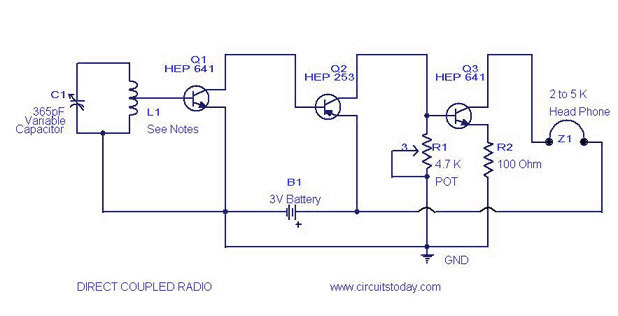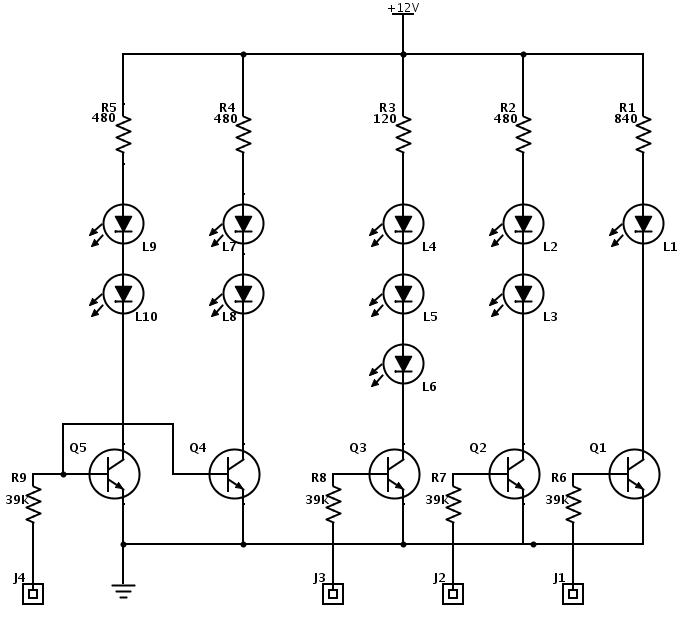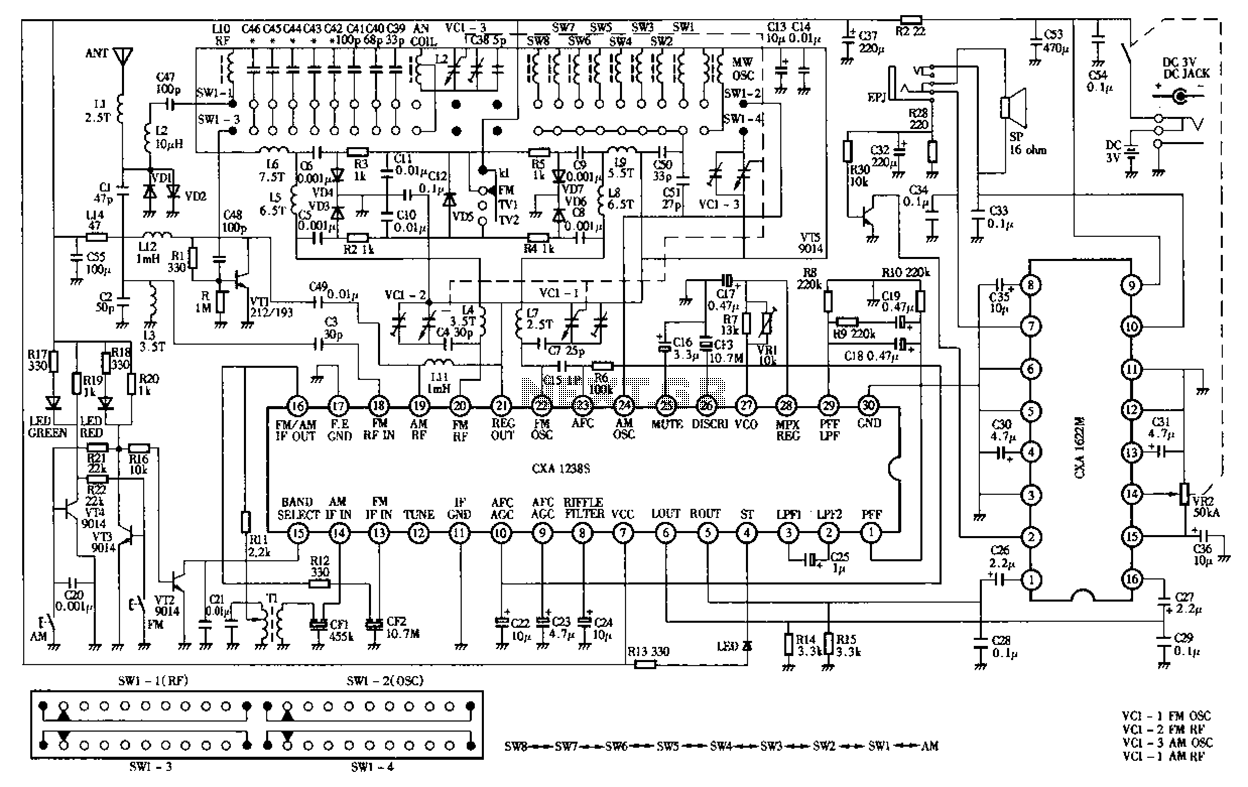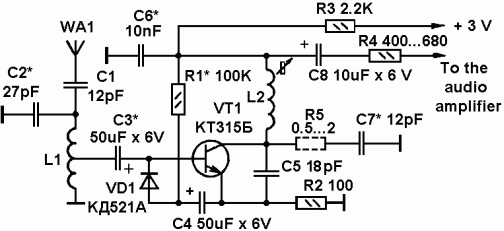
Ham Radio BFO
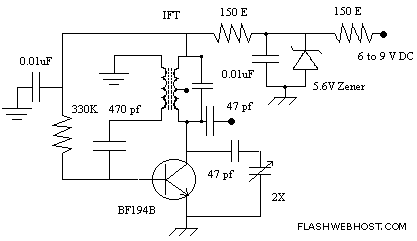
Ham Radio (amateur radio) is a popular hobby amongst electronics enthusiasts all over the world. Basically the hobby involves a person in making his own gear consisting of a receiver and transmitter or a transceiver (a receiver and a transmitter in one unit) after procuring a licence from the Ministry of Communications. Home brewing or self construction, an integral part of the hobby, has been sadly neglected in our country, despite the fact that various institutions with governmental help have come into being recently.
Ham radio, or amateur radio, is a multifaceted hobby that encompasses the design and construction of various radio equipment, including receivers, transmitters, and transceivers. The fundamental components of a typical ham radio setup include an antenna, a power supply, and the transceiver itself. The transceiver combines both transmitting and receiving functions, allowing for two-way communication.
A basic transceiver circuit can be divided into several key sections: the RF (radio frequency) section, the IF (intermediate frequency) section, and the audio section. The RF section is responsible for the initial signal processing, where the radio waves are captured by the antenna and amplified. This is typically achieved using RF amplifiers and mixers, which convert the incoming signals to a lower frequency for easier processing.
The IF section further processes the signals. It includes filters that eliminate unwanted frequencies and amplifiers that boost the desired signal strength. This section is crucial for ensuring clear communication, as it helps to reduce noise and interference from other radio sources.
The audio section of the transceiver converts the processed radio signals into audible sound. This involves demodulation, where the information carried by the radio waves is extracted and converted into audio signals. The audio output is then sent to a speaker or headphones for the operator to hear.
In addition to the core transceiver components, additional features such as digital signal processing (DSP) can enhance performance by providing advanced filtering and noise reduction capabilities. Modern ham radios may also include microcontrollers for managing various functions and user interfaces, enabling operators to customize their setups.
For those interested in home brewing, numerous resources are available, including schematics, kits, and community support. Building a ham radio setup not only enhances technical skills but also fosters a deeper understanding of radio communication principles and electronics.Ham Radio (amateur radio) is a popular hobby amongst electronics enthusiasts all over the world. Basically the hobby involves a person in making his own gear consisting of a receiver and transmitter or a transceiver (a receiver and a transmitter in one unit) after procuring a licence from the Ministry of Communications. Home brewing or self construction, an integral part of the hobby, has been sadly neglected in our country, despite the fact that various institutions with governmental help have come into being recently.
🔗 External reference
Ham radio, or amateur radio, is a multifaceted hobby that encompasses the design and construction of various radio equipment, including receivers, transmitters, and transceivers. The fundamental components of a typical ham radio setup include an antenna, a power supply, and the transceiver itself. The transceiver combines both transmitting and receiving functions, allowing for two-way communication.
A basic transceiver circuit can be divided into several key sections: the RF (radio frequency) section, the IF (intermediate frequency) section, and the audio section. The RF section is responsible for the initial signal processing, where the radio waves are captured by the antenna and amplified. This is typically achieved using RF amplifiers and mixers, which convert the incoming signals to a lower frequency for easier processing.
The IF section further processes the signals. It includes filters that eliminate unwanted frequencies and amplifiers that boost the desired signal strength. This section is crucial for ensuring clear communication, as it helps to reduce noise and interference from other radio sources.
The audio section of the transceiver converts the processed radio signals into audible sound. This involves demodulation, where the information carried by the radio waves is extracted and converted into audio signals. The audio output is then sent to a speaker or headphones for the operator to hear.
In addition to the core transceiver components, additional features such as digital signal processing (DSP) can enhance performance by providing advanced filtering and noise reduction capabilities. Modern ham radios may also include microcontrollers for managing various functions and user interfaces, enabling operators to customize their setups.
For those interested in home brewing, numerous resources are available, including schematics, kits, and community support. Building a ham radio setup not only enhances technical skills but also fosters a deeper understanding of radio communication principles and electronics.Ham Radio (amateur radio) is a popular hobby amongst electronics enthusiasts all over the world. Basically the hobby involves a person in making his own gear consisting of a receiver and transmitter or a transceiver (a receiver and a transmitter in one unit) after procuring a licence from the Ministry of Communications. Home brewing or self construction, an integral part of the hobby, has been sadly neglected in our country, despite the fact that various institutions with governmental help have come into being recently.
🔗 External reference
